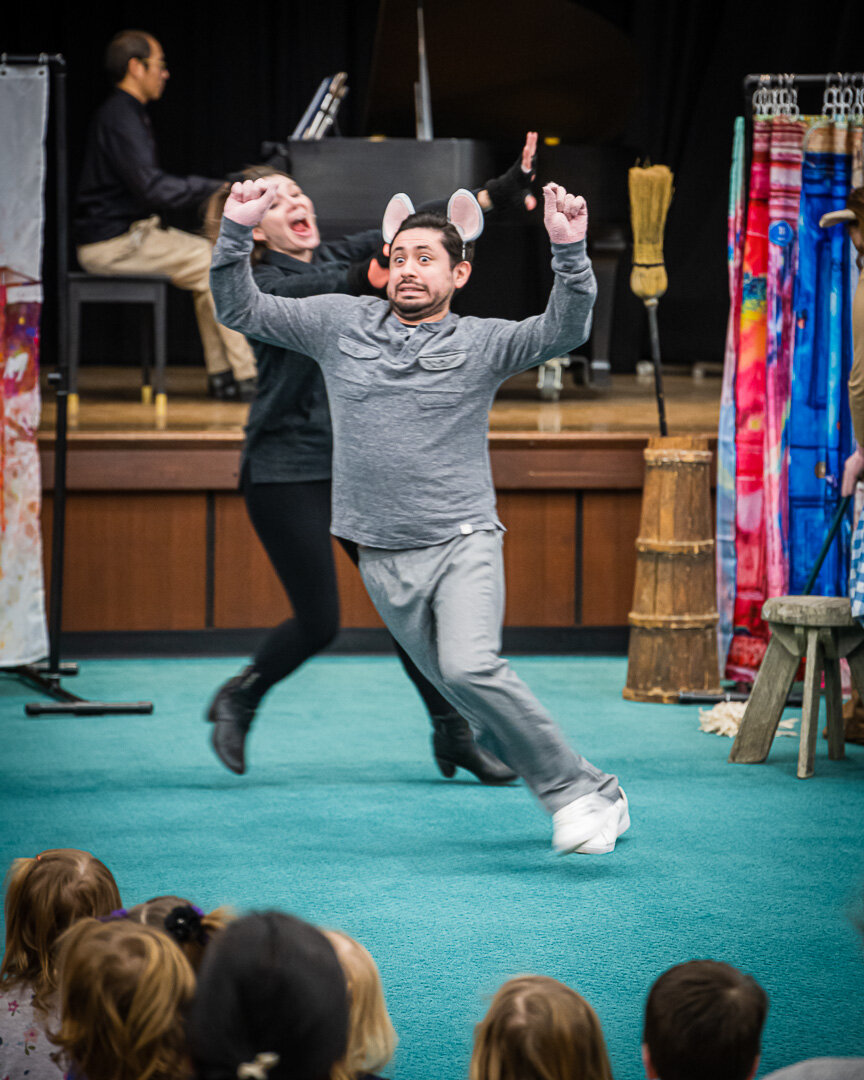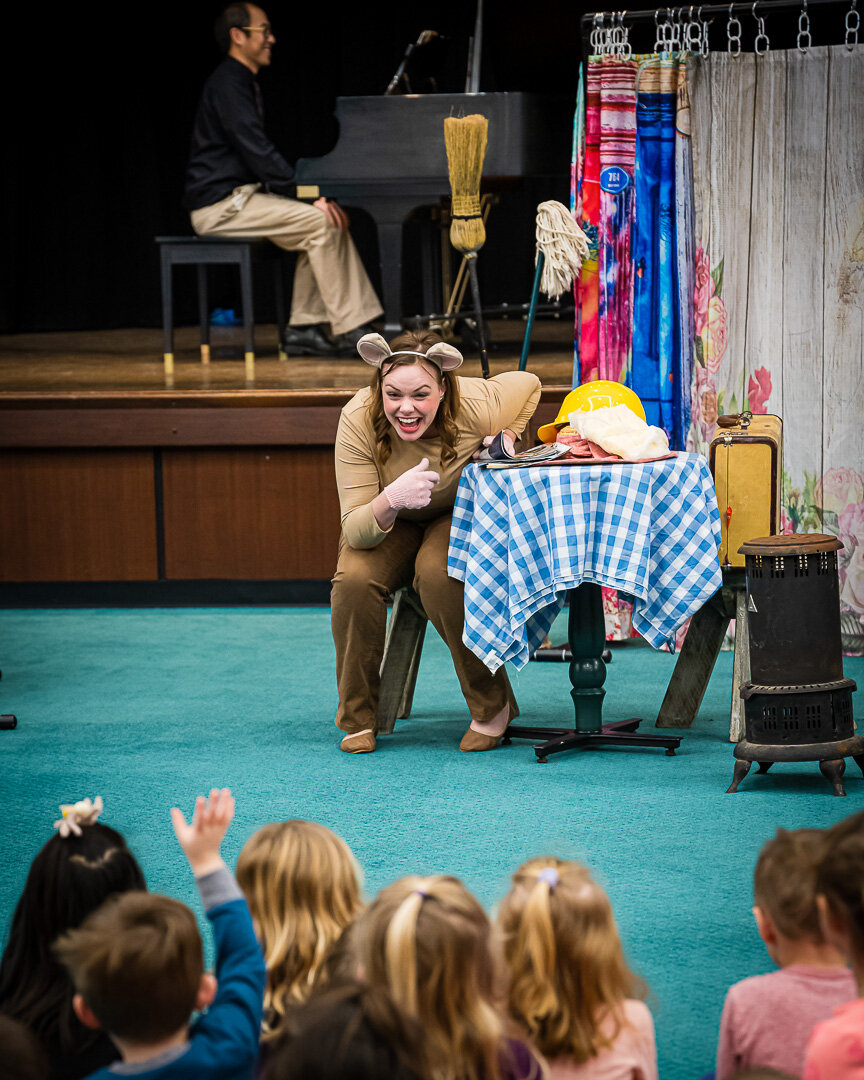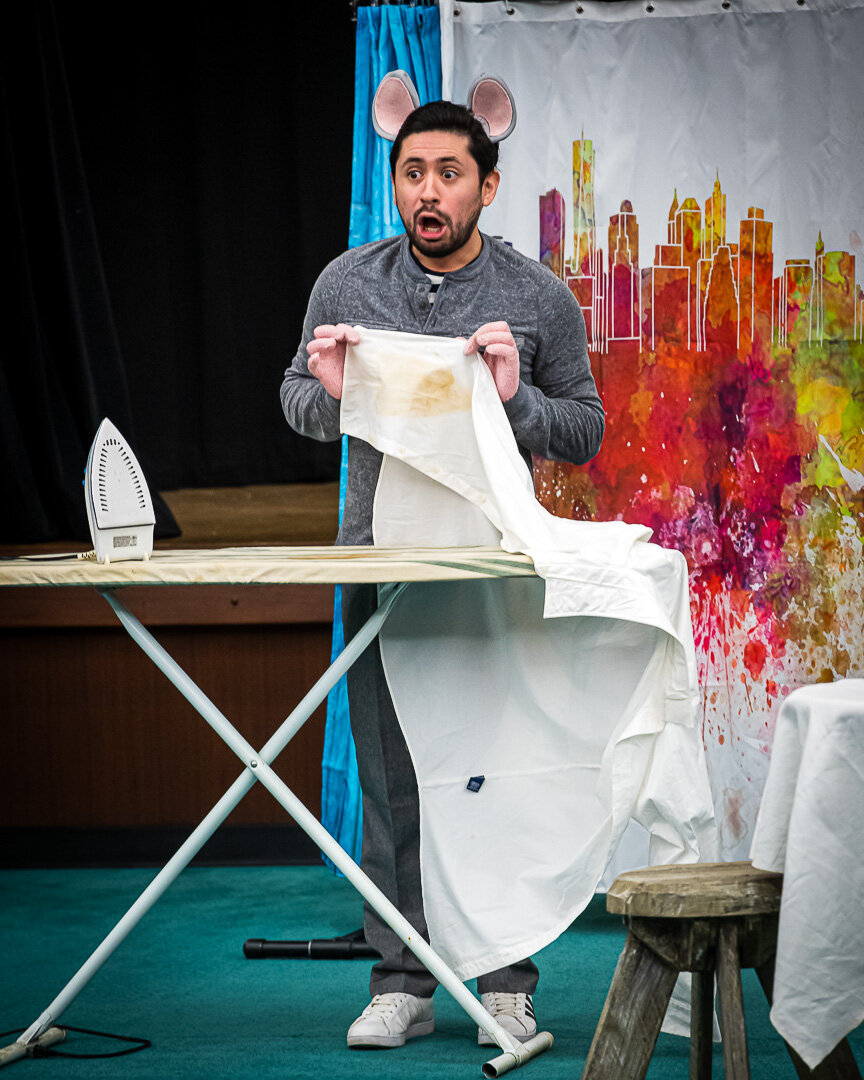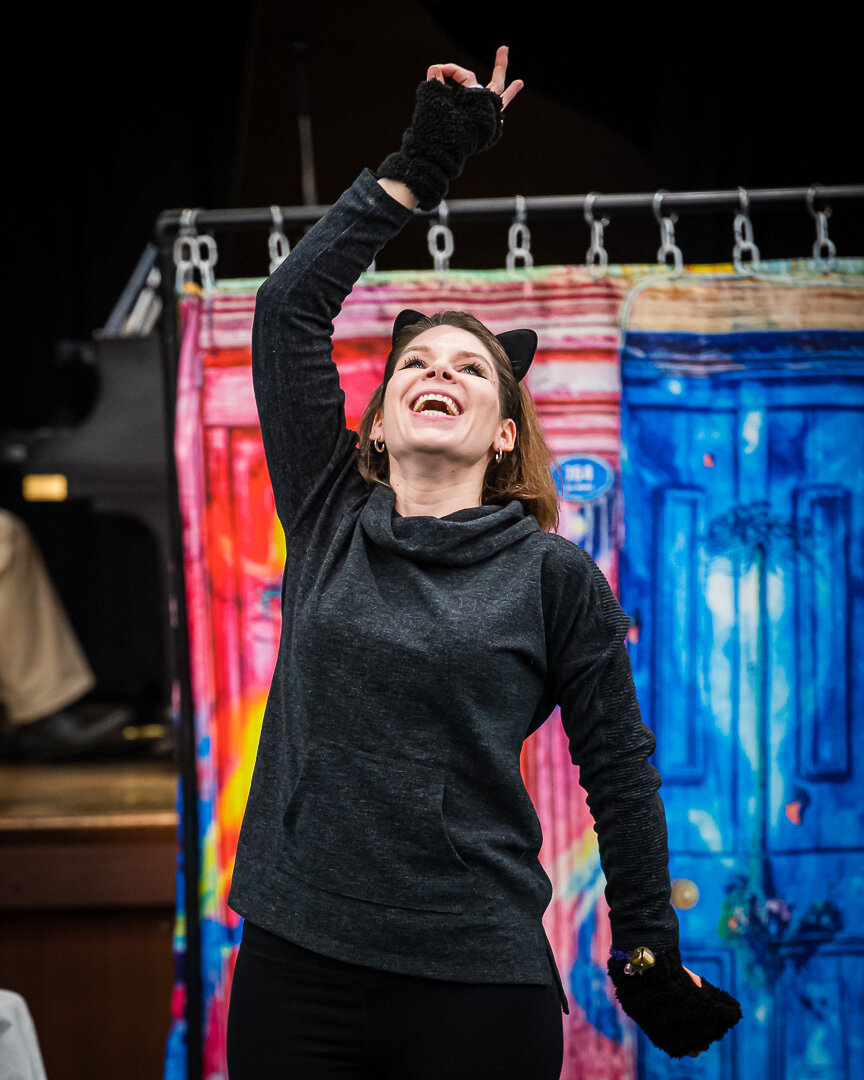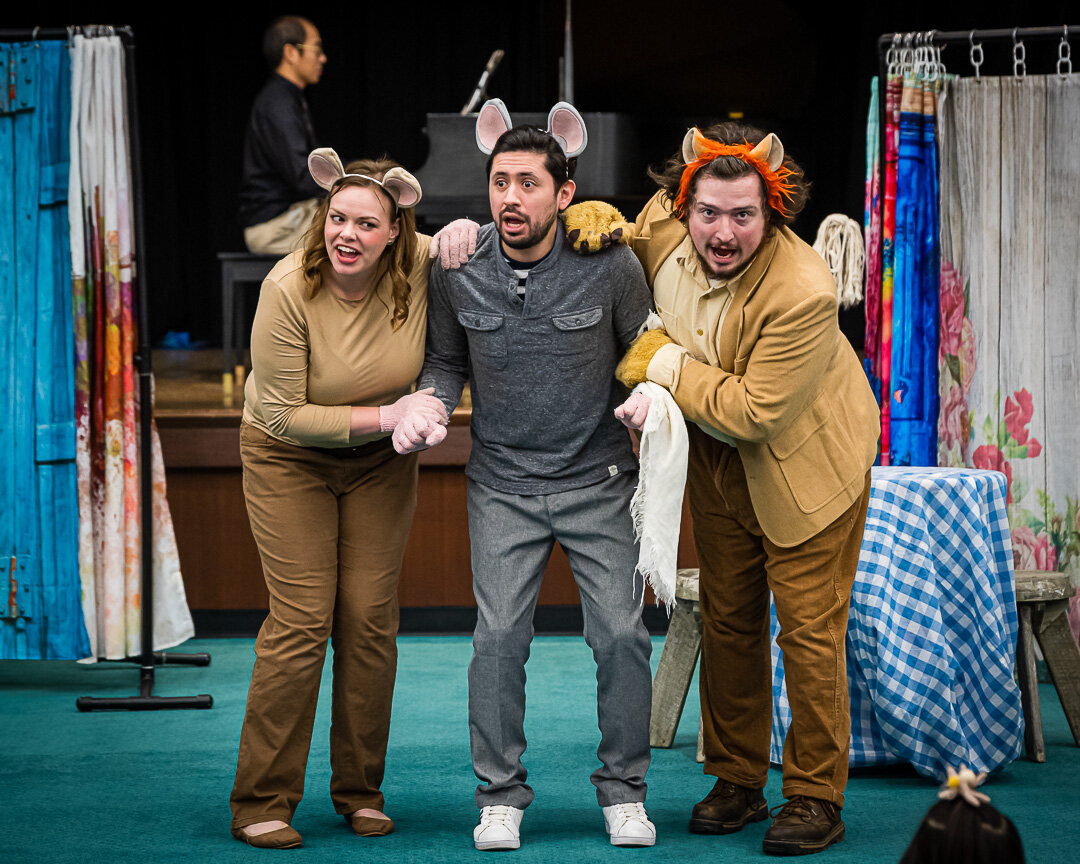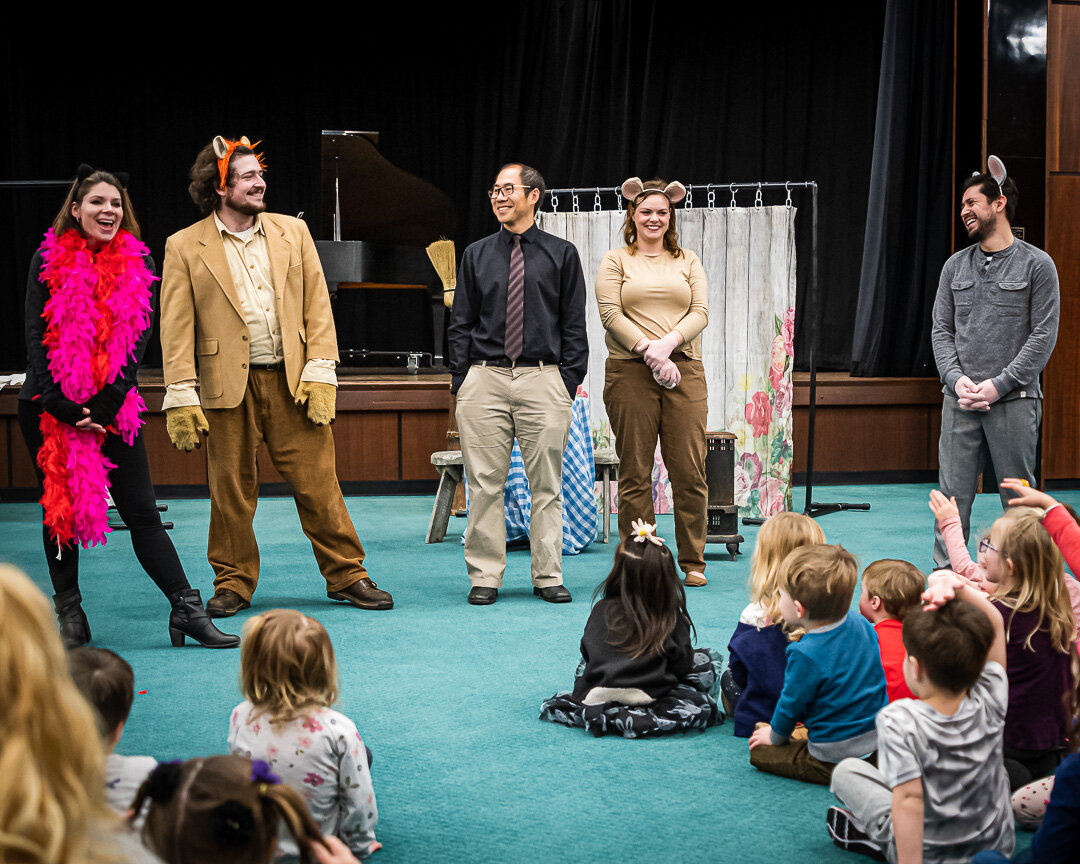The Tails of Cats and Mice (Spring 2020)
Writer/Arranger
Director/Designer
Photos by Roger David Manning
Performance & Production Credits
Producer: Indianapolis Opera
Pianist: Andrew Pham
Country Mouse: Janese Pentico
Lion: Alexander Henderson
City Mouse: Felipe Prado
Cat: Laura Zahn
Synopsis
A Country Mouse writes to her cousin that she would like to see him. Only problem is that she hasn’t been to the city and is a little scared to go for the first time. Thankfully an audience full of helpers will help point her in the write direction. As soon as she has finished packing, though, she hears a Lion in the distance, who complains about the outdoor life after a thorn has injured his paw. Will the Country Mouse help him or find some way to sneak out undetected?
In the city, the City Mouse waits for his cousin to arrive. When she does, they make plans to go to a restaurant nearby. Only problem is that there’s a cat on the way. The City Mouse thinks he has a way to track the cat if he can just convince it to put a bell around its paw. It’s a dangerous plan, but maybe it’s the only one they’ve got.
In the final scene, the mice return to the country after an eventful night out. But will they find a friend or foe in the Lion, and will the Cat be easy to detect or a silent predator? The choices they’ve made will make all the difference!
Working in a New Form
The Tails of Cats and Mice is my latest pastiche opera for elementary school audiences, and I am so happy to see how this strange idea morphed into its final form.
The basis of the story comes from a variety of Aesop’s Fables, which I had read when I was in elementary school and revisited through the years. The simplicity of the characters and message in every fable make them such an important part of classic literature, and often help shape a young understanding of the world at large.
The four stories that I mashed together included “The Country Mouse and the City Mouse,” “Belling the cat,” “The Lion and the Mouse,” and “The Slave and the Lion.” From them, I rendered a familiar core of four characters, including the Country Mouse, City Mouse, Cat, and Lion. However, the unique twist on the typical children’s opera structure is that the audience has the ability to choose how helpful or avoidant the mice are throughout the story. Different paths were written for the Country Mouse helping the Lion with the thorn in his paw, and similarly diverging story lines were written if the mice decided to bell the cat or try a less ingenious plan. The final scene in the script was given the subtitle “Consequences,” as the several choices the audience result in calamity or calm based on what they had chosen earlier.
It was a challenge to present the various strains with a clear hint of what Aesop would have suggested while still making the alternative look attractive. The idea of belling or not belling the cat yielded the most split decisions, because in the original story the mice decide that the idea is dangerous, impossible, or both. Their conclusion, which made it into this script in several story paths, concludes that good ideas are only worthwhile if you can make them happen.
The music came from a variety of top opera composers, including Mozart, Beethoven, Rossini, Humperdinck, Bizet, Offenbach, Verdi, Puccini, and Leoncavallo. My goal in selecting music for this production was pulling music from the most-performed operas in the United States or world, and avoid some of the deeper cuts I had used in The Three Sillies. My nature typically is to dive into repertoire that’s unfamiliar or rarely performed, so it was a nice change of pace to stick to numbers from Le nozze di Figaro, Gianni Schicchi, or Il trovatore for a change.

